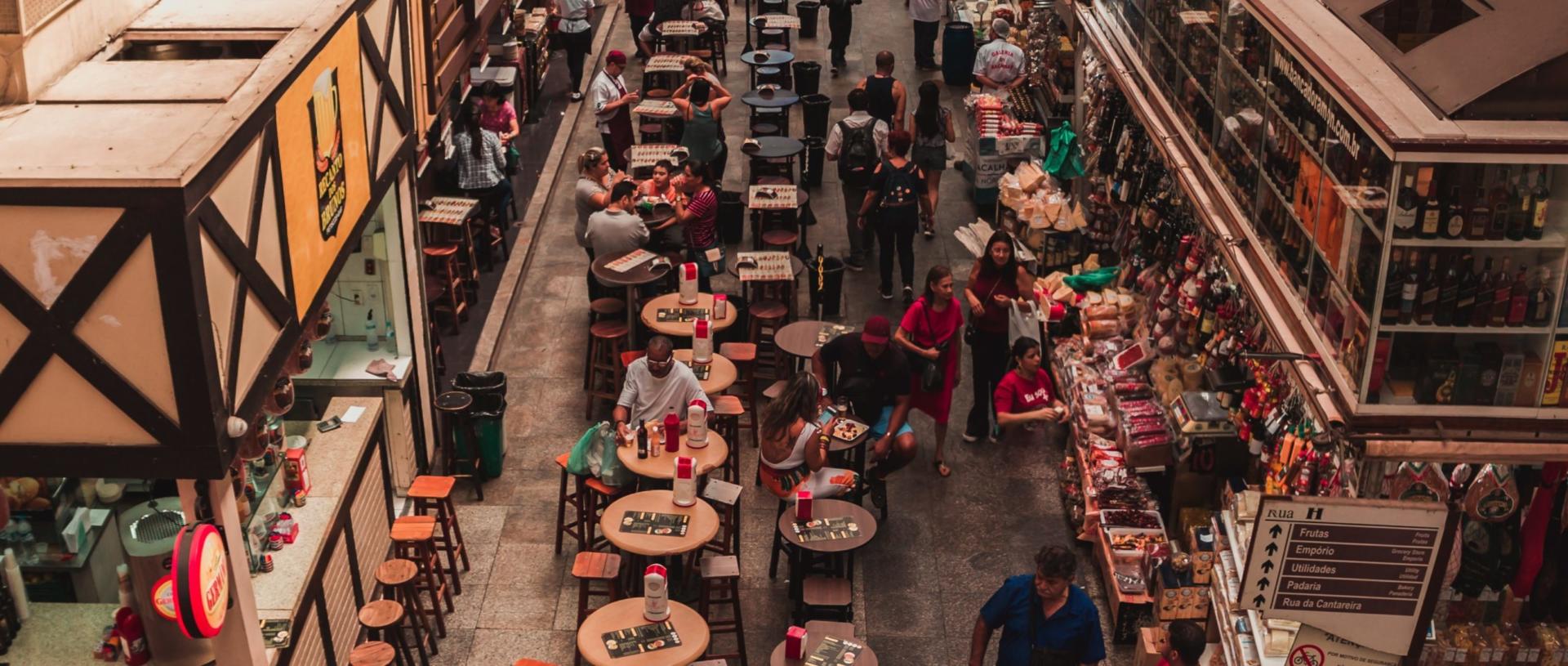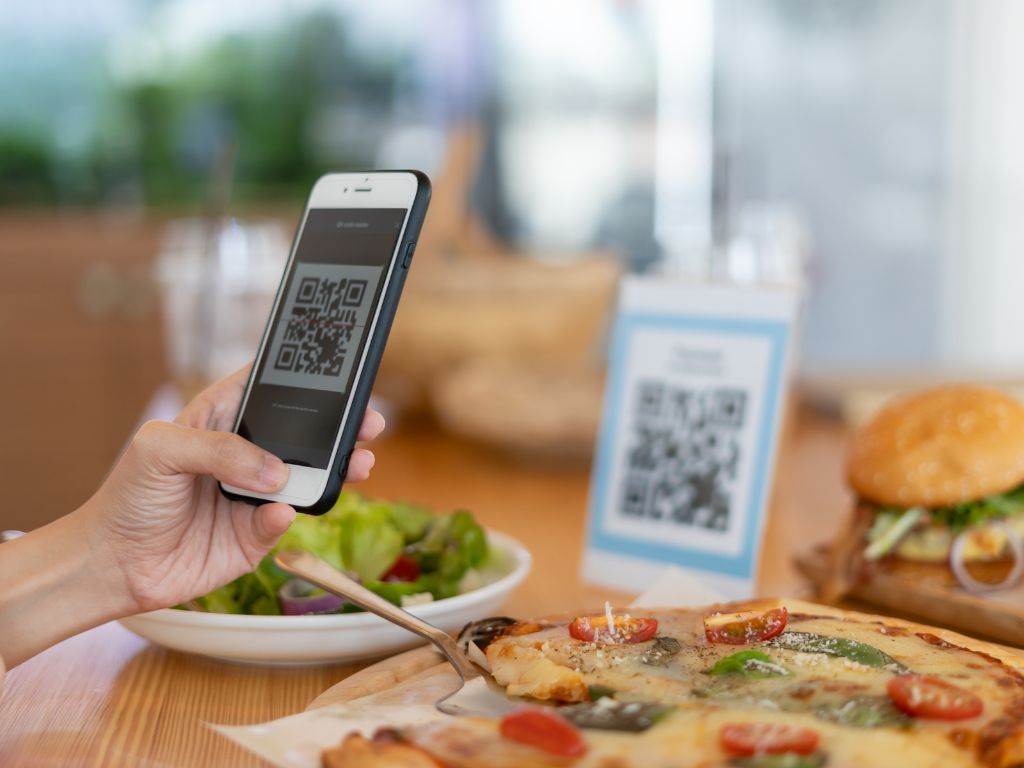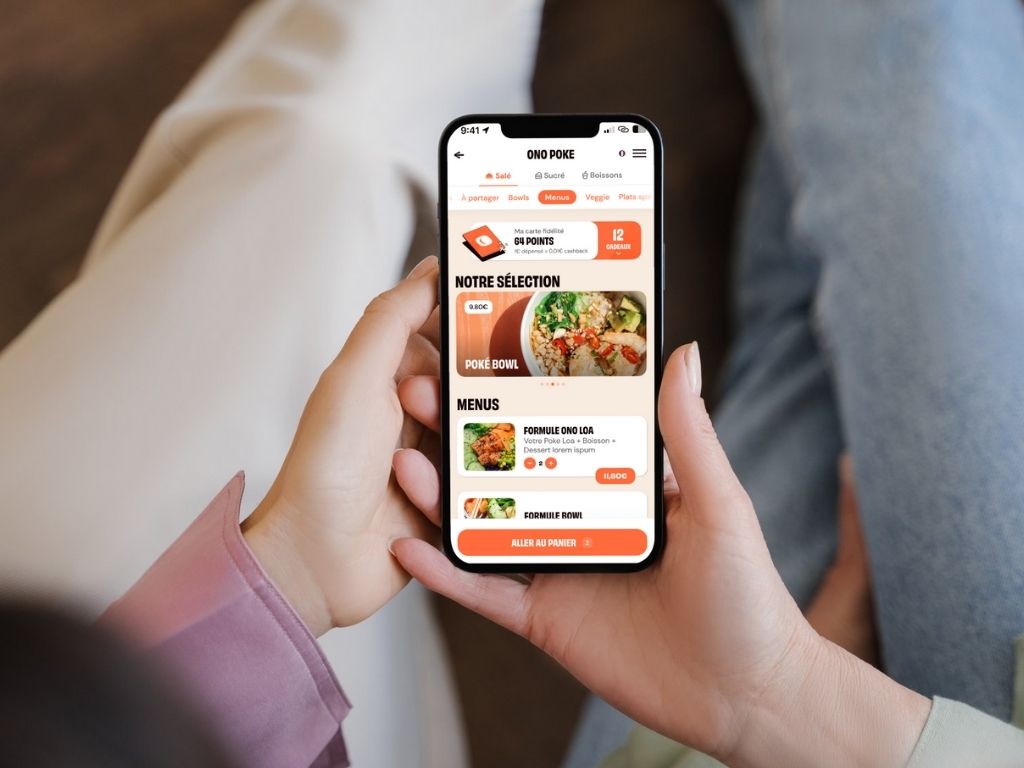Digital order taking: a checklist to get off to a good start
May 26, 2025
Between staff shortages, rising customer expectations for fast, autonomous service, and the need to optimize every square meter of your facility, digital is becoming a strategic lever.
The figures speak for themselves:
➜ In 2024, 45 % of customers prefer to order via interactive terminals or QR codes for greater fluidity.
➜ On the other hand, 77.4 % of restaurateurs in France say they have difficulty recruiting staff.
In this context, digital solutions help to offset these challenges by improving operational efficiency and the customer experience.
In this guide, we've put together a complete checklist to help you successfully digitalize your in-store order-taking. From tool selection to data analysis, staff training and flow management, Each step is essential to ensure a successful transition.
Tools: choosing what works for you
Before talking about hardware or interfaces, ask yourself one simple question: what type of ORDER FORM do you really want to implement in your venue? QR codes, terminalsToday, there are several options to choose from. And the most important thing is to choose a model that matches your way of working and your customers' expectations.
At Obypay, we support more than 1,500 establishments that want to simplify their order-taking without turning everything upside down. Those who succeed are not necessarily those who have the most complex tools, but those who have made the right choices, with a real logic of use behind it.
QR code, kiosk or mix: how do you choose the right device?
Three indoor options are available:
➜ The QR code allows customers to consult the menu, order and/or pay independently. It's flexible, quick to deploy and easy to upgrade.
➜ The control terminal, installed at the entrance or in the room, offers a stand-alone interface with real navigation comfort. Ideal for managing flow, multi-corners or groups.
➜ Assisted order taking (with a server) can still be useful in certain contexts, but often requires more training and equipment.
You can also mix approaches: QR codes at table + terminal at entrance, or QR code to order + payment at table.
The right device is the one that allows your teams to focus on service, and your customers to avoid unnecessary waiting.
Want to find out more? Go to our article ➜ Kiosks and QR codes: 3 reasons to adopt them in your establishment

Equipment: check off the essentials to avoid unpleasant surprises
Whether you opt for a QR code or a kiosk, here's what you need to think about in terms of hardware:
➜ Durable QR codes, They should be clearly visible, ideally laminated or engraved, and placed where the customer can see them without looking.
➜ A pro Wi-Fi network, stable, with good coverage over the whole room (and not overloaded by the customer network).
➜ If you install a : a robust touch screen, a fast thermal printer and a secure fixed support.
➜ A well-thought-out diet: no cables lying around, no power cuts in the middle of service.
At Obypay, formats are tested in the field: personalized QR codes, plug-and-play terminals... Everything is configured upstream to run from the very first service.
"Obypay is a very interesting solution for retailers who operate in a network, and who are looking to use a solution that is simple, packaged and usable everywhere in the same way, without technical complexity."Olivia Marketing Director 3 Brasseurs
Software: features to validate before signing
Good room control software must :
✔ be fluid, fast, legible (even on a smartphone)
✔ enable intuitive navigation, with a minimum of steps
✔ display a clear, well-organized map with photos and modifiers
✔ integrate with your cash register for a seamless journey
✔ offer useful modules: suggestion, combo menu, break management...
If you opt for kiosks, also test the experience in real-life conditions: waiting time, tactile quality, translation if necessary.
Want to find out more? Go to our article ➜ Control terminal software: how to choose?
Don't confuse tools and customer experience
The QR code or kiosk are entry points. What counts is the complete experience:
➜ Is navigation clear?
➜ Does the customer know right away whether to order or just consult?
➜ Can he get help easily if he needs it?
➜ Do orders go to the right place, without delay or confusion?
A well-thought-out path respects the tempo of the service and the autonomy of customers, without sacrificing the human relationship.
Human: train, involve and adapt roles
Digital doesn't replace the human element, it just improves the team's day-to-day work. Less on-the-fly order taking, fewer errors, less stress at peak times...
On one condition: so that everyone knows exactly how it works, and what's expected of them.
What digital technology is changing in theatrical roles
When you pass over a QR code or kiosk system, roles evolve, but do not disappear:
➜ The server no longer needs to memorize or retype each command.
➜ It saves time in welcoming, advising, keeping the link with the tables.
➜ He keeps better track of what's going on in the room, and can anticipate rather than react.
In short, we're moving from the role of executor to that of facilitator. And it's often appreciated by teams, once it's been properly implemented.
Provide real training (not just "show how it works")
Team-building isn't just about explaining where to click. It's about giving them a clear vision of the customer journey, what's changing for them, and how they can take advantage of the tool.
What works well :
✔ a short, practical session with real-life situations
✔ a review of the customer journey, from arrival to payment
✔ simple answers to all practical questions on the room side
Objective: that everyone feels comfortable, fast and confident from the very first service.
Involving the team from the outset: a strong lever for buy-in
The earlier the team is involved, the more natural the adoption. It's not just a question of comfort, it's a question of commitment.
You can :
➜ test the solution internally before launch
➜ take feedback into account to adjust QR code placement or stage order
➜ identify a room referent to support colleagues if needed.
An involved team is one that takes ownership of the tool and defends it in front of customers.
Preparing answers to customers who don't like "digital".
Even with a clear and fluid path, some customers will need to be accompanied.
It's not a failure, it's normal. And that's no hindrance either, as long as your team is prepared to handle it simply.
A few best practices:
➜ Reassure: "you can just consult if you prefer, we can also take the order directly from you."
➜ Show that it's fast, and that they keep the choice
➜ Be available without being insistent
When well presented, the vast majority of customers play along. And sometimes it's the most reluctant who become the most convinced.
"Today, the concept of kiosks, which has become commonplace, no longer really frightens users. What surprises me, however, is the ease with which they use Obypay and place cross-brand orders."Frédéric Deromedi Group CIO
Flow: guaranteeing fluidity between the dining room, the kitchen and the cash desk
Digitizing order taking, it's an opportunity to structure your flows clearly and efficiently, from the moment the customer places the order to the moment the bill is paid.
View order progress from A to Z
Even before talking about tools, start by tracing the actual route an order takes through your facility. Not just what happens at the table, but the whole circuit:
- The customer consults the card (via QR code or kiosk).
- He places the order and/or makes the payment.
- The order goes to the kitchen, the bar or the relevant station.
- It is prepared, served or made available.
- Collection is linked to the order.
- The ticket is closed, with or without additions.
On the surface, it's simple. But as soon as you have several types of service (on-site, take-away, delivery...), each step multiplies the risk of failure if the tools are not well connected.
This is where an all-in-one solution, with a single interface, makes all the difference.
By centralizing ordering, payment, kitchen printing and customer journey management in a single system, you reduce friction points:
✔ no double entry
✔ no confusion about the original channel (on site, click & collect, delivery)
✔ no discrepancy between what the customer sees and what the kitchen receives
At Obypay, all channels (in-store, takeaway, delivery) use the same interface. You keep a clear overview of workflows, and your teams can sequence services without having to switch tools or navigate between different screens.
It's not just simpler: it's more reliable, faster and smoother on a daily basis.
Want to find out more? Go to our article ➜ 5 reasons to choose an all-in-one solution rather than separate restoration tools

Specific cases to anticipate: several zones, modifications, cancellations, etc.
Even with a well-planned route, some cases require a little more anticipation.
For example:
➜ You have several production areas (bar, hot kitchen, desserts) : you need to be able to separate vouchers and track shipments.
➜ A customer wants to modify a dish or add an item after validation: the team needs to know how to do it, without losing sight of the order.
➜ Partial or total cancellation : how to treat it, when to treat it, and who is informed?
These are classic cases. But if they're not dealt with upstream, they can lead to a flutter in the middle of service.
At Obypay, these scenarios are taken into account in the settings. You can configure printouts by station, activate a validation step before sending to the kitchen, or manage modifications in real time, without breaking the flow.
Data: make the most of what digital ordering can teach you
Switching to a digital solution isn't just about improving the customer experience. It also gives you access to concrete data on what's really going on in your venue.
And if you take the time to look at them, you can optimize what really counts: fluidity, sales, customer experience and internal organization.
Tracking the right performance indicators
Digital order taking makes it possible to measure what we often guess by intuition:
➜ sales by channel (QR code, kiosk, click & collect...)
➜ the best-selling products, and those that are not released very often
➜ average ticket, with or without suggestion/additional sale
These data help you answer simple but key questions:
➜ Is it easy for customers to find what they're looking for?
➜ Do we sell better with digital than with traditional order taking?
➜ Does the service remain fluid during rush hour?
You can track this information in the back office, without the need for file extraction or formatting. These are concrete, actionable figures that evolve as your organization grows.
Link data to your customer database
Every order placed via a QR code, kiosk or online order is an opportunity to get to know your customers better.
When your solution is connected to a loyalty program and a databaseyou can :
✔ track the buying habits of a regular customer
✔ identify those who often order takeaway but never on site
✔ send a targeted offer to those who haven't ordered in a month
The data is not there to "spy", but to better personalize the experience, and keep in touch with customers even when they're not in the room.
"The great thing about Obypay is that this loyalty module is completely integrated into the ordering system. This allows us to easily convert our customers and create continuity in their experience, from ordering through to loyalty."Frédéric Deromedi Group CIO
Want to find out more? Go to our article ➜ Creating a post-purchase bond: the keys to customer loyalty in the foodservice industry
Adjust your map or processes according to feedback from the field
Some products are never released. Others are often modified. Some menus are a hit to take away, but not to eat in. Digital technology lets you see it all in black and white.
What you can do:
✔ Withdraw low-order products (or put them back on the shelf)
✔ Simplify confusing options
✔ Adjust headings or visuals to improve comprehension
✔ Reorganize your menu according to time of day or channel (e.g.: midday menu visible only on weekdays).
These are micro-adjustments that, taken together, improve clarity, efficiency and customer satisfaction.

The "tech only" checklist trap: what we see too often in the field
What makes the difference in the field goes beyond the tool itself: it's the deployment.
Installation, integration, configuration, getting started... that's where it all comes in.
What is too often overlooked (and costs restaurateurs dearly)
The classic scenario:
➜ The equipment arrives, but nothing has been planned for its actual location or use.
➜ Teams discover the tool on launch day.
➜ The interface is poorly configured: products misplaced, modifiers forgotten, confusing customer journey.
➜ And contact person in case of doubt.
And it's not the restaurateur's fault. It's often a problem of support.
Proper installation makes all the difference
A good supplier doesn't just sell you a solution: he helps you integrate it into your daily life.
What it changes:
✔ Equipment tested, ready, configured before dispatch
✔ The solution is connected to your existing cash register and tools
✔ The team is trained on your use cases
✔ You have a contact person in case of questions or adjustments
At Obypay, our role doesn't stop at providing a tool. We make sure it's installed correctly, configured to your way of working, and understood by the team before the first service.
Because a good tool is useless if it's not set up properly.
"It's a very intuitive application for customers and for us too. Plus the support and follow-up we get with the whole Obypay team really makes the difference."Mathieu Director of Palmito
Ready for action?
Digitizing order-taking in the dining room means designing a complete process that respects your teams, your flow and your customers.
Take the time to lay the groundwork:
✔ Choose the right device for your venue.
✔ Train and involve your team.
✔ Clarify the order-to-cash process.
✔ Lean on data to adjust and progress.
And if you need a partner who knows the terrain and knows how to adapt to your operation: you know where to find us.













